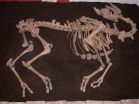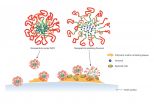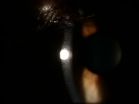Complete camel skeleton unearthed in Austria
2015-04-01
(Press-News.org) In 2006 construction began on a new shopping centre in Tulln. The works unearthed various archaeologically valuable objects that were salvaged during rescue excavations. Among these objects was also the complete skeleton of a large mammal.
Large mammal uncovered during excavations in Tulln
"The partly excavated skeleton was at first suspected to be a large horse or cattle," says archaeozoologist Alfred Galik from the Institute for Anatomy, Histology and Embryology at the University of Veterinary Medicine Vienna. "But one look at the cervical vertebrae, the lower jaw and the metacarpal bones immediately revealed that this was a camel."
Camel bones have been found in Europe dating back to the Roman period. Isolated bones or partly preserved skeletons are known from Mauerbach near Vienna as well as from Serbia and Belgium. But a complete camel skeleton is unique for Central Europe.
"Exotic animal" died in Tulln
In addition to horses, the Ottoman army also used camels for transportation and as riding animals. In cases of scarcity, the soldiers also ate the animal's flesh. But the skeleton found in Tulln was complete. "This means that the animal was not killed and then butchered. It may have been acquired as part of an exchange," says first author Galik. "The animal was certainly exotic for the people of Tulln. They probably didn't know what to feed it or whether one could eat it. Perhaps it died a natural death and was then buried without being used."
Camel was a hybrid
Extensive DNA analysis showed that the animal was a hybrid: its mother was a dromedary and its father a Bactrian camel. The genetic diagnosis confirmed what the scientists saw morphologically. Several of the physical features were that of a dromedary, others of a Bactrian camel. "Such crossbreeding was not unusual at the time. Hybrids were easier to handle, more enduring and larger than their parents. These animals were especially suited for military use," Galik explains.
The camel was male, around seven years old and most likely castrated.
Find dated to the 17th century
Besides animal bones, the excavations also unearthed ceramic plates and other items. A coin - a so-called "Rechenpfenning" - from the time of Louis XIV dates the find to the years between 1643 and 1715. A medicinal bottle containing Theriacum, a medieval remedy from the chemist's shop "Apotheke zur Goldenen Krone" in Vienna was also found at the site. This pharmacy existed between 1628 and 1665, which helped date the site with further precision.
INFORMATION:
Service:
The article „A sunken ship of the desert at the river Danube in Tulln, Austria", by Alfred Galik, Elmira Mohandesan, Gerhard Forstenpointner, Ute Maria Scholz, Emily Ruiz, Martin Krenn and Pamela Burger was published in the scientific journal PLOS ONE. DOI 10.1371/journal.pone.0121235 http://dx.plos.org/10.1371/journal.pone.0121235
About the University of Veterinary Medicine, Vienna
The University of Veterinary Medicine, Vienna in Austria is one of the leading academic and research institutions in the field of Veterinary Sciences in Europe. About 1,300 employees and 2,300 students work on the campus in the north of Vienna which also houses five university clinics and various research sites. Outside of Vienna the university operates Teaching and Research Farms. http://www.vetmeduni.ac.at
Scientific Contact (archaeozoology):
Dr. Alfred Galik
Institute of Anatomy, Histology and Embryology
University of Veterinary Medicine Vienna (Vetmeduni Vienna)
T +43 1 25077-2521
alfred.galik@vetmeduni.ac.at
Scientific Contact (genetics):
Elmira Mohandesan, PhD
Institute of Population Genetics
University of Veterinary Medicine Vienna (Vetmeduni Vienna)
T +43 681 815 033 12
elmira.mohandesan@vetmeduni.ac.at
Released by:
Susanna Kautschitsch
Science Communication / Public Relations
University of Veterinary Medicine Vienna (Vetmeduni Vienna)
T +43 1 25077-1153
susanna.kautschitsch@vetmeduni.ac.at
[Attachments] See images for this press release:

ELSE PRESS RELEASES FROM THIS DATE:
2015-04-01
Therapeutic agents intended to reduce dental plaque and prevent tooth decay are often removed by saliva and the act of swallowing before they can take effect. But a team of researchers has developed a way to keep the drugs from being washed away.
Dental plaque is made up of bacteria enmeshed in a sticky matrix of polymers--a polymeric matrix--that is firmly attached to teeth. The researchers, led by Danielle Benoit at the University of Rochester and Hyun Koo at the University of Pennsylvania's School of Dental Medicine, found a new way to deliver an antibacterial agent ...
2015-04-01
People who apply eyeliner on the inner eyelid run the risk of contaminating the eye and causing vision trouble, according to research by a scientist at the University of Waterloo. This is the first study to prove that particles from pencil eyeliner move into the eye.
Dr. Alison Ng, at the Centre for Contact Lens Research at Waterloo, directed the study when she was at Cardiff University in Wales. The team's findings appear in Eye and Contact Lens Science and Clinical Practice, the official peer-reviewed journal of the Contact Lens Association of Ophthalmologists.
Dr. ...
2015-04-01
If you are trying to have a baby, a good night's sleep is more important than ever. A new research report appearing in The FASEB Journal shows that the womb has its own "body clock" that needs to synchronize with the mother's body clock to ensure optimal conditions for fetal growth and development. The inability of a mother's body clock to synchronize with the womb's clock may be at least part of the reason why some women have difficulty carrying a pregnancy to full term. Specifically, the failed synchronization switches off body clock genes in cells lining the womb, which ...
2015-04-01
ANCHORAGE, Alaska -- A team of scientists led by the U.S. Geological Survey found that polar bears, increasingly forced on shore due to sea ice loss, may be eating terrestrial foods including berries, birds and eggs, but any nutritional gains are limited to a few individuals and likely cannot compensate for lost opportunities to consume their traditional, lipid-rich prey -- ice seals.
"Although some polar bears may eat terrestrial foods, there is no evidence the behavior is widespread," said Dr. Karyn Rode, lead author of the study and scientist with the USGS. "In the ...
2015-04-01
Washington, DC--Night owls are more likely to develop diabetes, metabolic syndrome and sarcopenia than early risers, even when they get the same amount of sleep, according to a new study published in the Endocrine Society's Journal of Clinical Endocrinology & Metabolism.
The study examined the difference between night and morning chronotypes, or a person's natural sleep-wake cycle. Staying awake later at night is likely to cause sleep loss, poor sleep quality, and eating at inappropriate times, which might eventually lead to metabolic change.
"Regardless of lifestyle, ...
2015-04-01
Washington, DC--Exposure to the endocrine-disrupting chemical bisphenol A during pregnancy may raise a mother's susceptibility to weight gain and diabetes later in life, according to a new animal study published in the Endocrine Society's journal Endocrinology.
A chemical used to manufacture plastics and epoxy resins, bisphenol A (BPA) is found in a variety of consumer products, including plastic bottles, food cans and cash register receipts. The U.S. Centers for Disease Control and Prevention have estimated that more than 96 percent of Americans have BPA in their bodies.
BPA ...
2015-04-01
Cambridge, Mass. April 1, 2015-- A collaborative study between researchers from the Broad Institute of MIT and Harvard, Massachusetts Institute of Technology, and the National Center for Biotechnology Information of the National Institutes of Health (NIH-NCBI) has identified a highly efficient Cas9 nuclease that overcomes one of the primary challenges to in vivo genome editing. This finding, published today in Nature, is expected to help make the CRISPR toolbox accessible for in vivo experimental and therapeutic applications.
Originally discovered in bacteria, the CRISPR-Cas9 ...
2015-04-01
Many microbes cannot be cultivated in a laboratory setting, hindering attempts to understand Earth's microbial diversity. Since microbes are heavily involved in, and critically important to environmental processes from nutrient recycling, to carbon processing, to the fertility of topsoils, to the health and growth of plants and forests, accurately characterizing them, as a basis for understanding their activities, is a major goal of the Department of Energy (DOE). One approach has been to study collected DNA extracted from the complex microbial community, or the metagenome, ...
2015-04-01
NEW YORK (April 1, 2015) - Hospitals and health systems preparing for and treating patients with Ebola Virus Disease (EVD) in the fall of 2015 faced unexpected challenges for ensuring safety of staff, patients and the community. The experiences are detailed in two studies published online in Infection Control & Hospital Epidemiology, the journal of the Society for Healthcare Epidemiology of America (SHEA).
In a case study of the care of two patients with confirmed or suspected EVD at the National Institutes of Health (NIH) Clinical Center's Special Clinical Studies Unit, ...
2015-04-01
Mammals are good at figuring out which direction a sound is coming from, whether it's a rabbit with a predator breathing down its neck or a baby crying for its mother. But how we judge how far away that sound is was a mystery until now. Researchers from UConn Health report in the 1 April issue of the Journal of Neuroscience that echoes and fluctuations in volume (amplitude modulation) are the cues we use to figure the distance between us and the source of a noise.
"This opens up a new horizon," says Duck O. Kim, a neuroscientist at UConn Health. Researchers have long ...
LAST 30 PRESS RELEASES:
[Press-News.org] Complete camel skeleton unearthed in Austria


